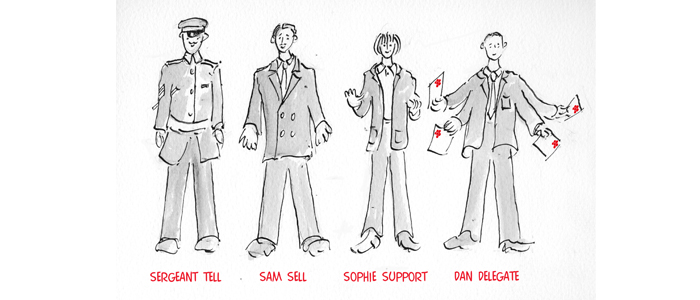In part 1 of ‘Leadership 101’, we looked at what the key aspects and attributes of leadership are, those vital for developing skills that will last throughout your working life.
In part 2, we turn our focus instead to leadership styles.
Good leaders are agile, able to flex their leadership style based on the situation. Detailed below are four different styles of leadership. If you find yourself locked in to only one style, you will seriously limit the potential of a team. The best leaders are those that seek to be authentic, but have the flexibility to use other styles where the situation demands it.
Four different kinds of leader
Autocratic – authority comes from fear. Advantages – by far the most popular historically, can be good in a crisis. Disadvantages – limits creativity, totally dependent on those at the top, often leads to competition among “princes”. Autocratic leaders are often narcissistic. Tends to create a highly political culture of “Yes” men.
Hierarchical – authority comes from title/uniform. Advantages – can be good with young or inexperienced populations. Disadvantages – limits creativity and responsibility, works badly with intelligent and capable populations. Hierarchical leaders are often insecure and indecisive suffering from “impostor syndrome”. Tends to create a disempowered culture, reluctant to take decisions.
Hero – authority comes from charisma. Advantages – inspiring, great things often get done, people can perform beyond what they thought they were capable of. Disadvantages – not often sustainable beyond the original “hero”, can lead to hero creating fires to put out, does not get the most from everyone. Hero leaders are often narcissistic. Will create a culture in the image of the hero leader – very dependent on their personality.
Authentic – authority comes from character e.g. values, wisdom and courage. Advantages – gets the most out of nearly everyone, sustainable. Disadvantages – needs to be learned and is a real skill, very hard if the population is not ready or willing to step up, authentic leaders are less common. Tends to create an empowered culture of distributed leadership.
We’ve blogged about different leadership styles before – here’s a post from September this year on whether there is a definitive leadership style.
